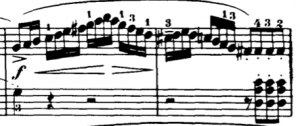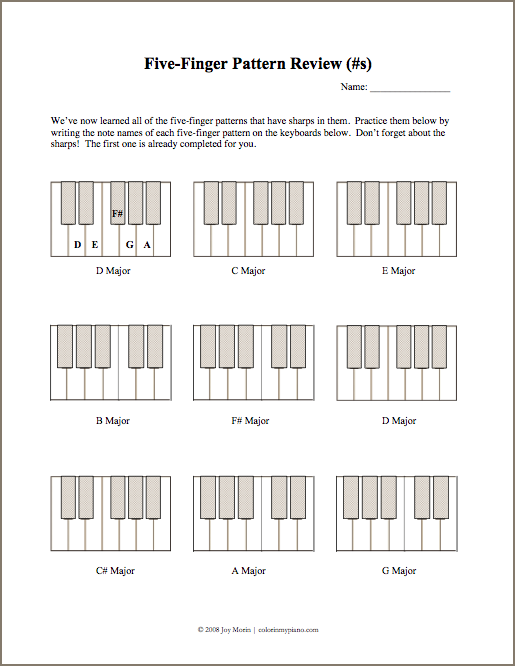What follows are the notes I took from a session with Martha Hilley at the 2010 Michigan Music Teachers Association conference.
FUNCTIONAL SKILLS ARE IMPORTANT TO EVERYONE ~ by Martha Hilley
“Functional skills” include skills such as harmonization, improvisation, transposition, rhythm, and theory. There are many fun ways to incorporate functional skills into group/private settings. Today we are going to try out some examples:
Rhythm Activities
Activity #1. Make up a series of patterns such as:
Tap Clap Tap Clap Tap Clap |___| Clap Tap |___| Tap Clap Tap |___| |___| ClapPut them on a transparency or write them on a whiteboard. (The box is the quarter rest.) Most students don’t have time for rests! They want to keep going. So give them something to do during the rests (e.g., saying “rest” aloud; or making some kind of movement during the rest). This is a great activity for class piano or monthly group lessons. Continue reading “2010 MMTA Conference (4): Functional Skills are Important by Martha Hilley”



 Lately, I’ve trying out this phrase with my students, in situations when a student is struggling with the technique of playing a particular passage:
Lately, I’ve trying out this phrase with my students, in situations when a student is struggling with the technique of playing a particular passage:







 This week, I received an friendly email from a piano teacher in Texas who is looking for ways to professionalize her studio. I already sent her a reply via email but I was thinking that you readers may have some suggestions and advice for her too — so here are some of her questions!
This week, I received an friendly email from a piano teacher in Texas who is looking for ways to professionalize her studio. I already sent her a reply via email but I was thinking that you readers may have some suggestions and advice for her too — so here are some of her questions!
 Just added to the page of free Printables:
Just added to the page of free Printables:
 What happens when you have to give a performance but your mind is preoccupied with all sorts of crazy stuff going on in your life?
What happens when you have to give a performance but your mind is preoccupied with all sorts of crazy stuff going on in your life?
 Ever wonder about the difference between rallentando and ritardando? Well, I did….so I decided to look into it and add my two cents to the debate. =)
Ever wonder about the difference between rallentando and ritardando? Well, I did….so I decided to look into it and add my two cents to the debate. =)